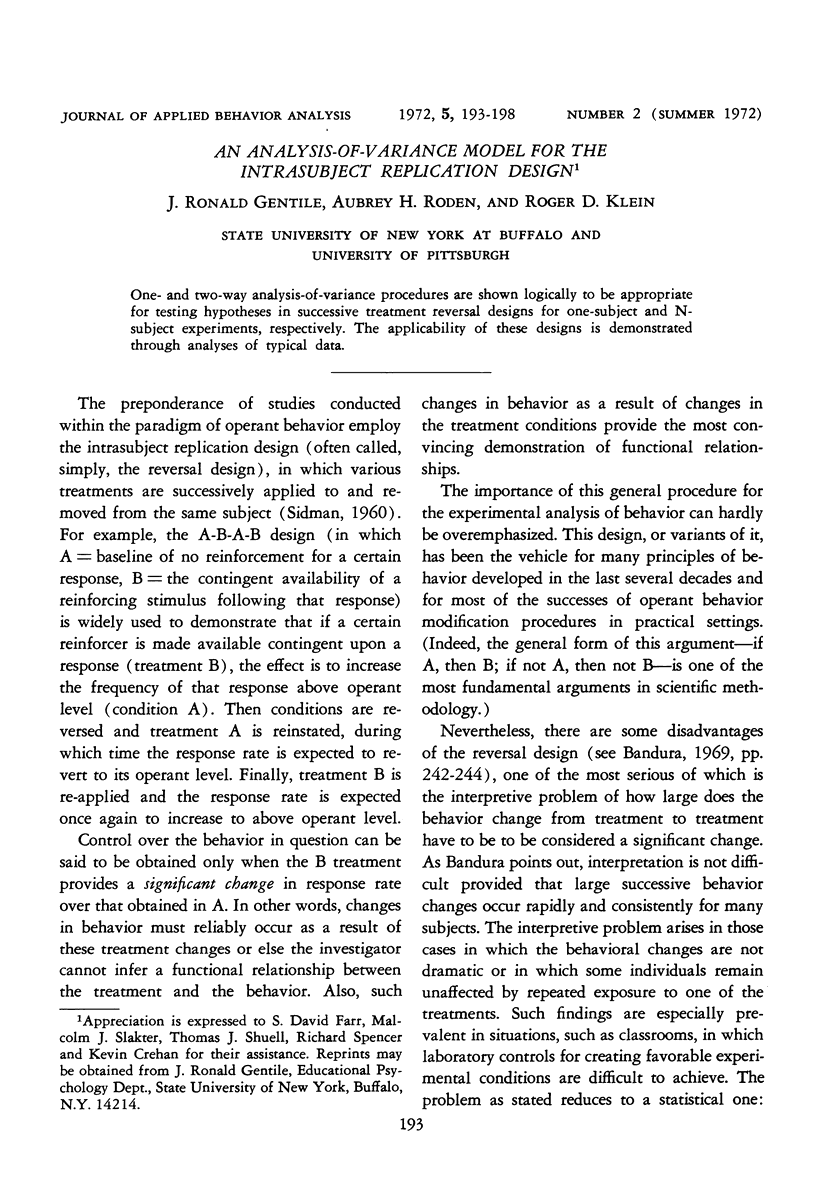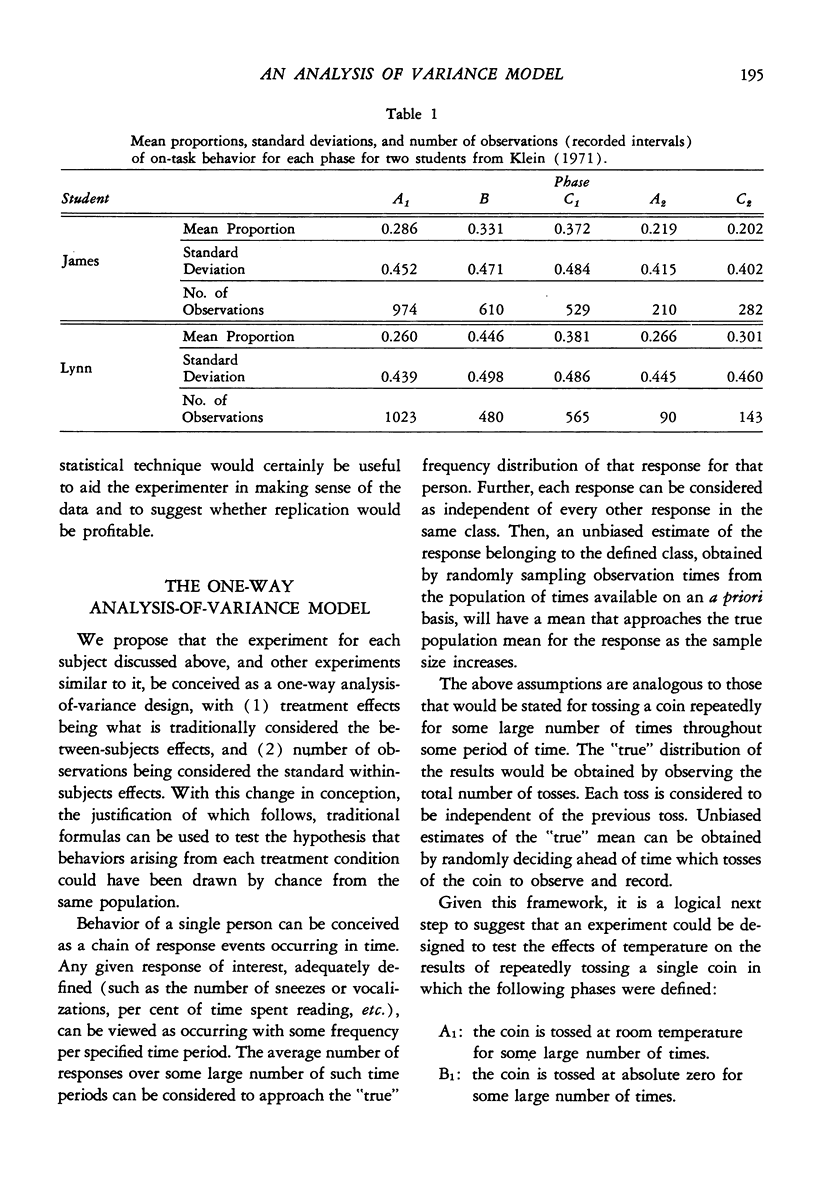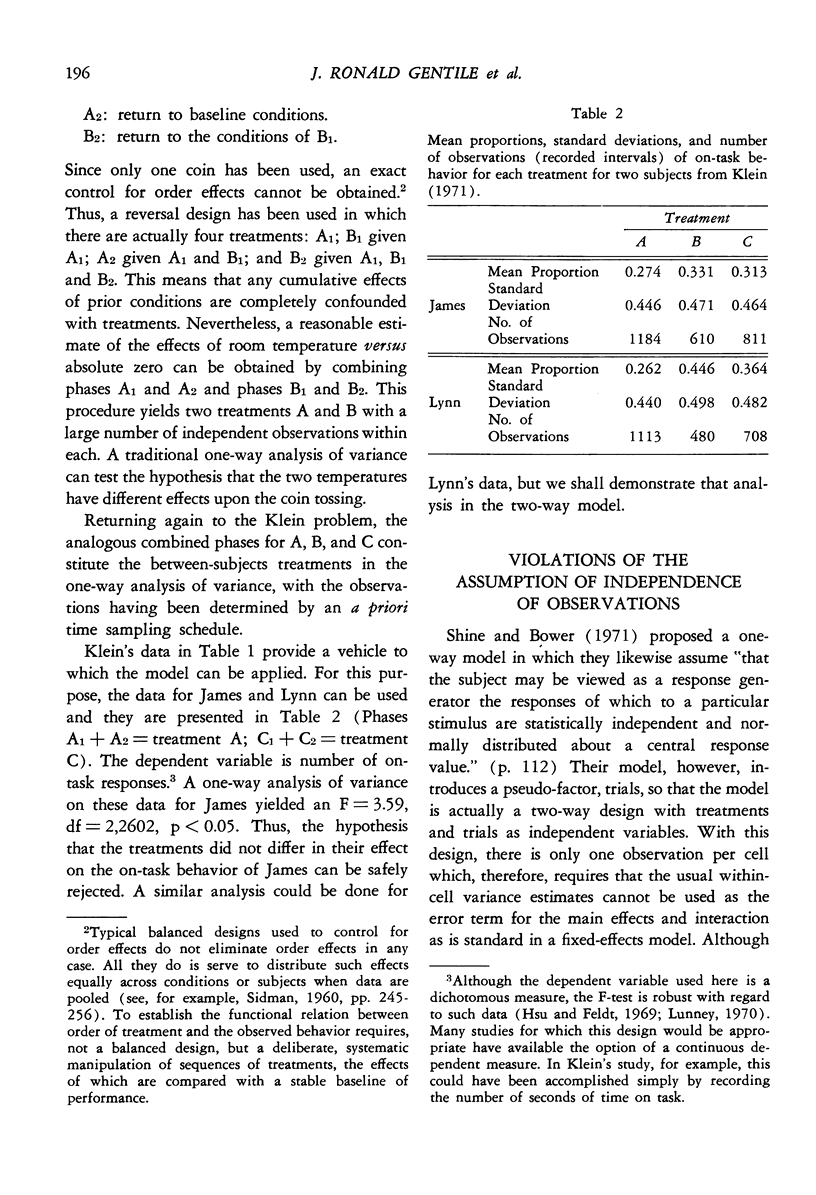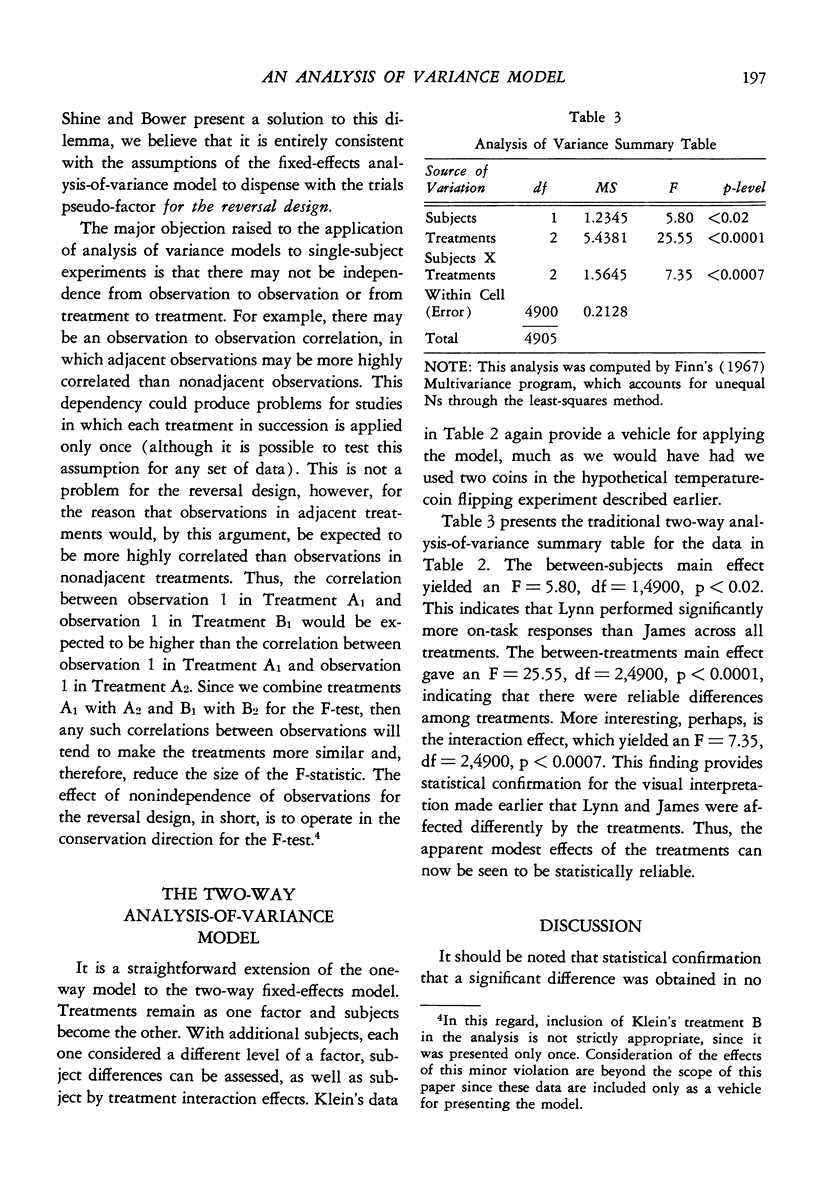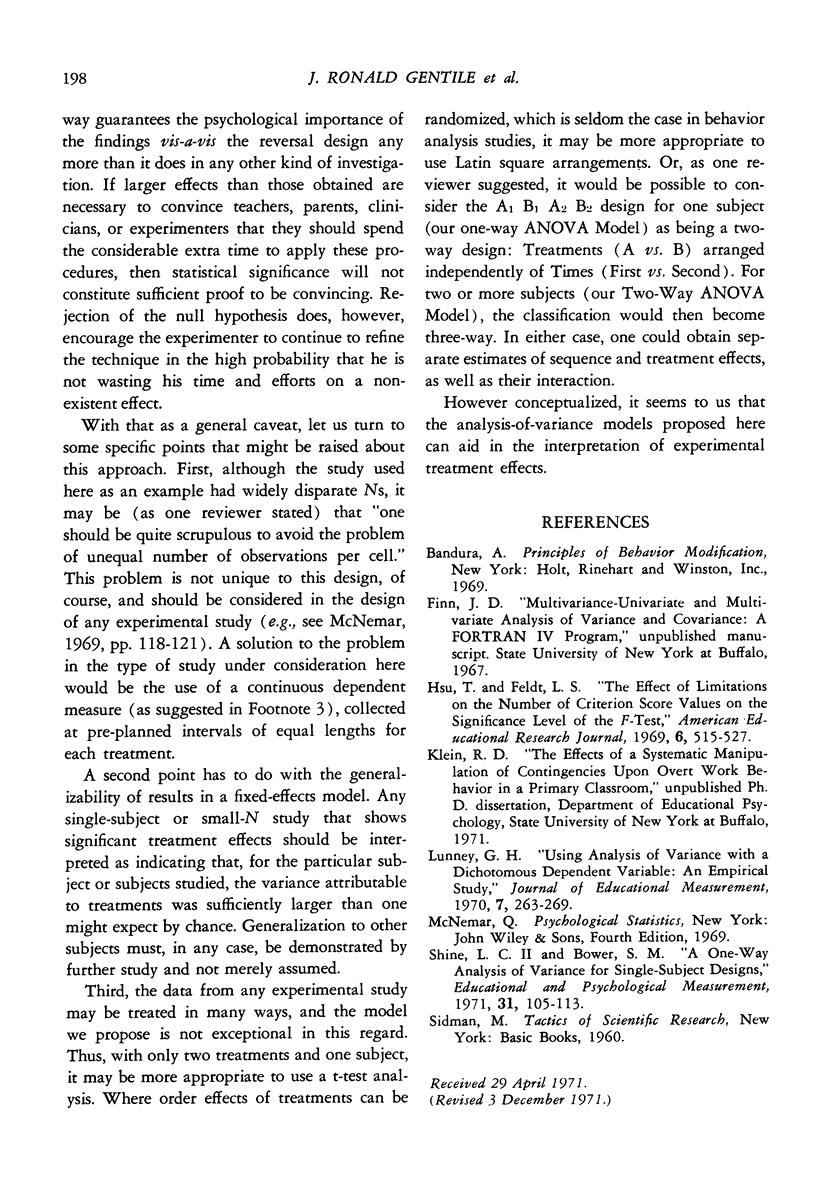Abstract
One- and two-way analysis-of-variance procedures are shown logically to be appropriate for testing hypotheses in successive treatment reversal designs for one-subject and N-subject experiments, respectively. The applicability of these designs is demonstrated through analyses of typical data.
Full text
PDF